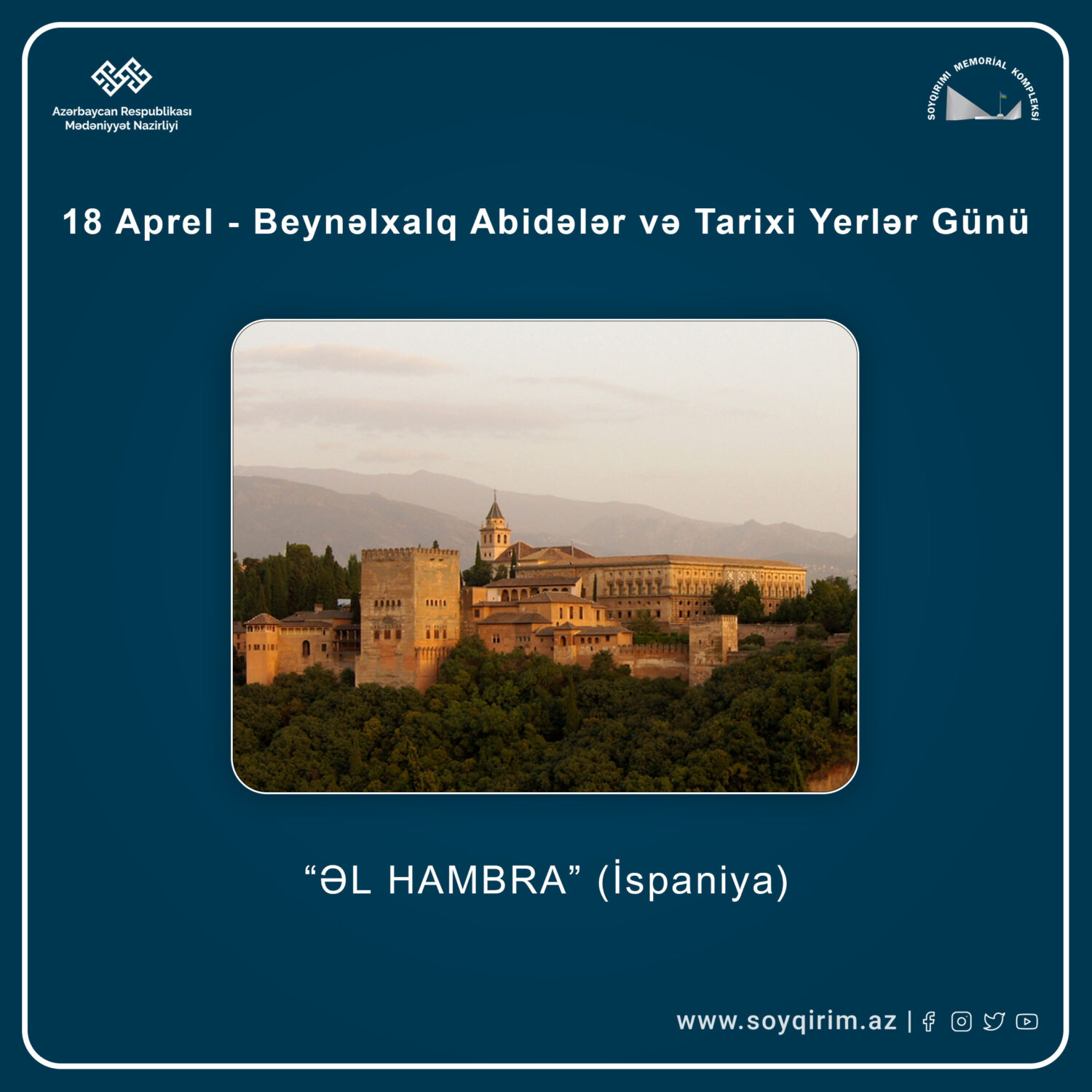"Alhambra Palace"

Located in the south of Spain, in the city of Granada, the Alhambra Palace is one of the most magnificent examples of Islamic architecture, holding an irreplaceable place in world cultural heritage due to its rich history, unique architecture, and cultural significance. The name Alhambra translates from Arabic as “Red Castle,” because the palace is mainly constructed from red bricks, which is reflected in the visual features of the palace. The palace was built in the 13th and 14th centuries by the rulers of the Nasrid dynasty and became the cultural, religious, and political symbol of the last center of the Andalusian Muslim state. The history of the Alhambra Palace dates back to the 9th century. Initially built as a simple fortress, this site gradually transformed into a larger complex. During the Nasrid dynasty period (1238–1492), which marked the peak of Islamic culture in Andalusia, the palace was particularly developed. During this period, the architecture, art, and connection with nature reached a new level, with scenic gardens, wide courtyards, and high-level architectural examples decorated with impressive and intricate patterns. The main purpose of this monumental complex, located around the city of Granada, was to function as both a fortress and the residence of the ruling family. Alhambra was also constructed as a defensive fortress and a strategic location. The various sections within the fortresses and the palace symbolized the peak of Andalusian culture and created a cultural heritage for future generations.
The main part of the palace complex is divided into three sections: the Alcazaba fortress, the royal residence, and the Generalife gardens. The Alcazaba is the oldest part of the palace, built for military purposes. This fortress aimed to control and defend the entire area of Granada.
The royal residence is the main palace where the rulers of the Nasrid dynasty lived, and it houses the highest examples of architecture. The most magnificent part of the palace is the Generalife, a place for the sultans to relax, famous for its magnificent gardens, fountains, and water channels. The Generalife gardens are also rich in various water sources, such as the “Pool of Dawn,” which highlights the beautiful and symbolic significance of the area.
The interior design of the Alhambra Palace is extraordinarily rich. Its walls and arches are adorned with magnificent geometric patterns and enriched with Arabic calligraphy and carvings. The palace’s Court of the Lions is particularly famous, featuring a fountain made up of 12 marble lion statues, symbolizing the refreshing power of water in life. The Hall of the Two Sisters draws attention with its unique design, with verses from the Quran engraved and various patterns and weavings incorporated. The palace’s architecture also boasts a rich water supply system, with fountains, pools, and water channels decorated with intricate patterns and ornaments throughout the entire palace.
After the conquest of Granada in 1492, the Alhambra became the residence of King Ferdinand and Queen Isabella of Spain. Although several changes were made during this period, the palace’s primary architecture was preserved. During the reign of King Charles V, a new European-style palace was built inside the complex, but these changes mainly affected the exterior sections, and Alhambra preserved all the characteristics of original Islamic architecture.
In the 19th century, restoration work on the palace began, and it once again became a cultural center. In 1984, the Alhambra Palace was included in UNESCO’s World Heritage List. The palace is one of the most visited and best-preserved historical monuments in the world. Every year, millions of tourists visit this magnificent palace, experiencing the pinnacle of Andalusian Islamic architecture. Alhambra holds a special place not only in terms of architecture but also for its historical and cultural significance. This palace continues to maintain its position in history as a magnificent monument where the past, culture, and art converge.






